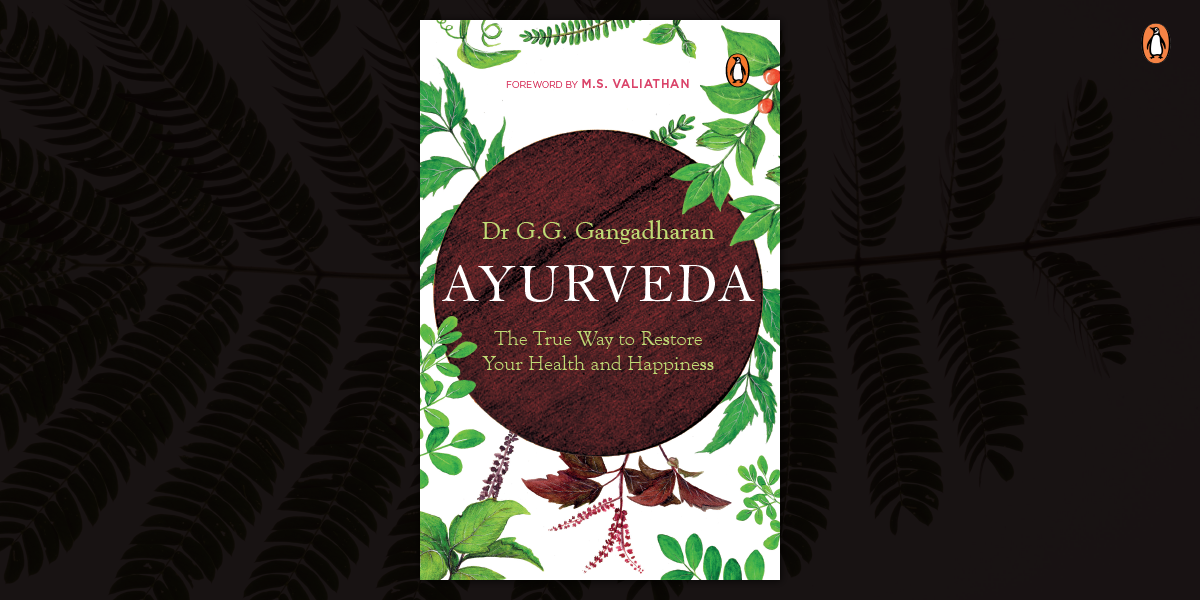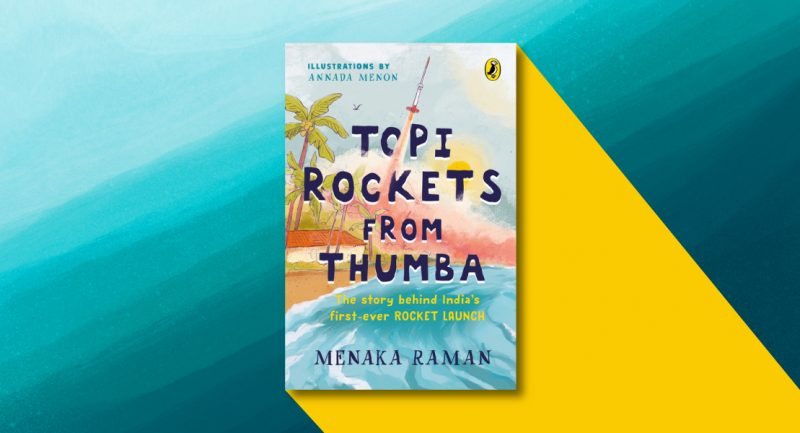
This book is not a defence of Ayurveda. A sound, scientific framework of healthcare that has saved countless lives over 5000 years does not need defenders. It needs champions, and to be given wings. In a world that needs Ayurveda more than ever, Dr G.G. Gangadharan, who has been researching both the theory and the practice for the past thirty-five years, shows in his book the logic behind the science.
Let us take a look into some essential tips from this book, so that you can find the secret to greater happiness through balance and long-lasting health.
~

Ayurveda
Dr G.G. Gangadharan
The plant that the West calls Rauwolfia serpentina is known in Ayurveda as ‘sarpagandha’. Ayurveda has been using it for centuries for the treatment of high blood pressure without any side-effects. Modern scientists have researched this plant and identified a master molecule named reserpine. They extracted it
from the plant, synthesized it in a laboratory and used it to make medicines that would reduce blood pressure. The medicine achieved this objective, but also caused side-effects that included depression and suicidal tendencies.* After many fatal incidents, the medicine had to be retracted from the market.
There’s a larger story behind this phenomenon—what I call the ‘Sarpagandha Syndrome’. To understand this story, we need to know how nature works and how Ayurveda has moulded itself to fit into nature’s contours.
Nature, Wholeness and the Dynamic Equilibrium
We know that nature abhors a vacuum. Let’s also acknowledge that nature abhors the lack of wholeness. At every point in time since the formation of our planet, every life form and substance found in nature has remained in a state of dynamic equilibrium— within itself and also with respect to its environment. If there is a momentary imbalance in that—for instance, if an unstable isotope is created—nature quickly restores the substance to its whole and natural state.
Meanwhile, nature uses chemistry to change biology over vast periods of time, so that every life form continuously evolves to a higher level of resilience.
Since nature sets such exacting standards for itself, is there any wonder that Ayurveda trusts it implicitly? By extension, Ayurveda trusts every plant and human body to be whole and complete. In the human body, this dynamic equilibrium is maintained by, among other phenomena, homeostasis; Claude Bernard, the father of experimental physiology, called this self-regulating ability the milieu interior. Since the human body and other natural life forms are designed this way, any imbalance in the human body—that manifests as a disease—can be addressed by using the restorative power of nature.
When we take a step back and look at the entire universe, we realize that nature is awe-inspiring. We realize that every life form is a microcosm of the entire universe. Since humans tend to be self-obsessed, let us rewrite that sentence as follows: The human body is a microcosm of the entire universe. The matter of the universe is in the human body and what is in the human body is in the universe. After all, astronomy tells us that the atoms that make up our body were produced inside a star. We share chemistry with the universe and, therefore, everything we find in it is potentially therapeutic for us.
So for the vaidya—the practitioner of Ayurveda—our planet is a boundless pharmacy. This makes the vaidya a bridge connecting the whole nature with the whole human being.
We will now look at how Ayurveda embraces the wholeness of the plant while also treating the human being in its entirety. In simpler terms, Ayurveda does not reduce a plant to its constituent bio-molecules. Nor does it reduce the human being to a set of ailing organs. Life is undoubtedly enabled by molecules and organs, but life is experienced in its entirety. Therefore, the processes that nurture and preserve life must be wholesome.
The first sign that Ayurveda is wholesome is the fact that its medicines do not cause side-effects if used appropriately.
No Side-Effects
Yes, Ayurvedic medicines cause no side-effects. The brazenness of this claim is made apparent by the fact that many allopathic medicines have a list of side-effects that’s longer than the list of chemicals used to make them. Despite painstaking research that can last years—including clinical trials on various life forms and multiple iterations of development—allopathic medicines have been unable to shrug off the bane of unwanted externalities. Take antibiotics, for example—every generation of antibiotics is made stronger so as to vanquish newer generations of more resilient superbugs. This also means that every new generation of antibiotics takes a stronger toll on the human body, with the side effects becoming starker. In such a dynamic domain, Ayurveda continues to use medicines free of side-effects, conceptualized and created many centuries ago. How has Ayurveda achieved this?
Well, Ayurveda studies plants in their entirety. Roots, stems, bark, flowers, fruits and leaves are understood—as constituent yet interconnected parts of the plant—and the therapeutic value of each part is understood. That done, Ayurveda identifies the best way to extract the plant’s essence for human use.
Any part of any plant has hundreds of types of bio-molecules, such as alkaloids and saponins. In many cases, only one bio-molecule among these is capable of acting as the master molecule that combats the ailment. While allopathy will isolate, extract and synthesize this bio-molecule, Ayurveda will extract the
entire part because it believes that the other bio-molecules in the plant negate the side-effects caused by just one of them.
This throws new light on the Sarpagandha Syndrome mentioned earlier. The plant sarpagandha behaves like a team, whereas reserpine behaves like the star player of that team, who is completely lost without his teammates.
The long and short of it is that Ayurveda trusts nature’s design to be more holistic than its counterpart, the human design, and by embracing nature’s holism, it manages to do away with potential side-effects.
Having said that, let’s make another statement that, which at first glance, may appear contradictory: We don’t take all parts of the plant or even everything within a single part of the plant.
All we are saying is that molecular-level selection of matter leads to problems. So, in Ayurveda, the vaidya removes those parts of the plant that are neither necessary for treatment, nor easily ingested by the human body. Through well-considered extraction methodologies, the physician makes the therapeutic qualities of the plant accessible to humans.









